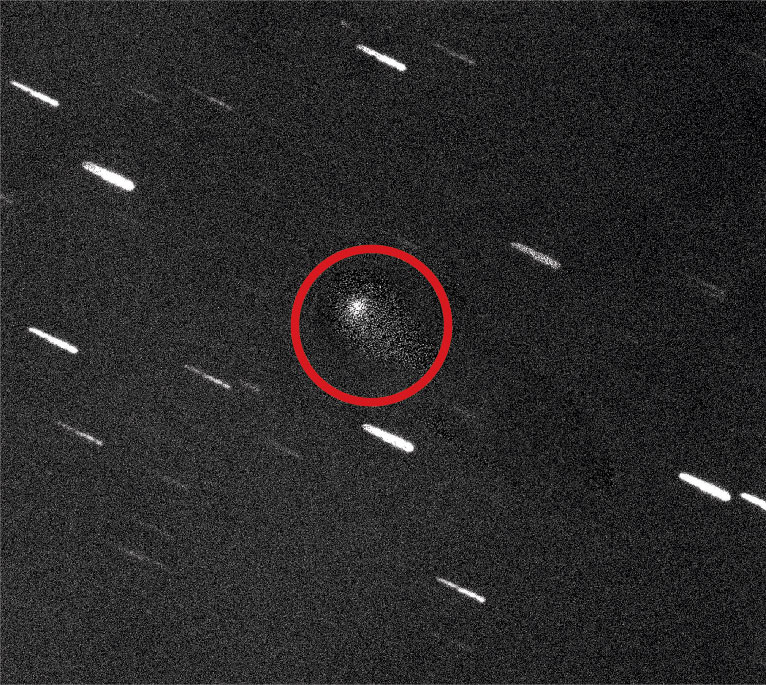Comets are mysterious and not-so-rare cosmic visitors. We see them — if not always their bright, long tails — once every decade or so, often with the naked eye. The most interesting aspect of a comet is its dynamic nature. Visually, the waxing and waning of its tail as it passes by the sun attracts amateurs and professionals alike. The tails pointing away from the sun often part from the fuzzy heads. When the earth passes through these leftover tail-pieces strewn in its way, another majestic cosmic show — often called a meteor shower — is triggered. So, comets are simply delightful.
Every encyclopaedia and social media source would tell you that comets originate from the two “rubbish” storage areas of our solar system, namely the Kuiper belt beyond Neptune’s orbit and the Oort cloud located at the outer reaches. There are plenty of such objects where they came from. In fact, a trillion of them were left over during the formation of the solar system about 4.5 billion years ago.
But that was before 2I/Borisov popped up on our cosmic canvas on August 30 this year. It is the first confirmed interstellar comet visiting our solar system. It will move away from our optical universe after a couple of years. Compared to what we know about comets, Borisov’s properties are most strange. Unlike any object in recorded history, it appeared to be crossing the plane containing our planets at about a 45 degree inclination. Its hyperbolic open trajectory has an exorbitant eccentricity of 3.36 as opposed to the normal comets which have eccentricity less than 1.0. The newly-identified comet’s estimated excess velocity at infinity is 32km/s along with very high eccentricity — the reason it is designated as interstellar. The first interstellar object, 1I/Oumuamua, discovered a couple of years ago was more like an asteroid. It was devoid of a tail and stayed for a short time after astronomers realised that it was interstellar.
Borisov reached its closest point to the sun on December 8; it was roughly one astronomical unit (distance between the sun and the earth) away on the other side of the sun. That means the comet received solar radiation — which evaporates its ice to form the tail — that was roughly same as what the earth receives. Thus the tail is short.
Even then, a recent photograph taken from the Indian Centre for Space Physics (ICSP) Observatory at Sitapur in West Midnapore shows a tail that can fit 10 Earth-like objects side by side. The exo-comet is very faint, at least 32,000 times fainter than what a naked eye can see in the clearest sky. So getting such an image is tough.

PhD students Argha Sil, Ashim Sarkar and Shyam Sarkar at the Indian Centre for Space Physics Observatory at Sitapur in West Midnapore Courtesy: ICSP
That such exo-comets should be present in every stellar system became clear to me as soon as the first exo-planet was discovered by Aleksander Wolszczan and Dale Frail in 1992 around a pulsar [a dense, rotating neutron star that emits electromagnetic radiation], PSR1257+12. Since the sun is a garden variety star, any other star in the solar neighbourhood will also be accompanied by a load of “rubbish” — the storehouse of potential comet heads — whenever exo-planets are created. K.S. Krishnaswamy and I published a paper in 1992 in the European journal, Astronomy and Astrophysics, to show that the rubbish dump around PSR1257+12 would also emit lines from OH and CN (from which water and hydrogen cyanide form, one giving and the other taking away life). I am happy to see that all these chemicals have also been detected in 2I/Borisov by several observatories. Its composition seems to be very similar to those of our solar system comets.
Where could this visitor have come from? A research article I published in the Monthly Notices of the Royal Astronomical Society, and which precedes the exo-planet discovery of 1992, is most relevant in this context. In it I showed that occasionally there is exchange of angular momentum between giant planets such as Jupiter and Saturn and the comet heads of the Oort cloud. This causes some to lose angular momentum and move towards the sun, forming long period comets. Some others —and this is important — in fact about 4-5 per cent of the trillion lot, gain angular momentum and are sling-shotted out of the solar system.
This means that stars in the solar neighbourhood would also be ejecting such exo-comets. I believe that we will be seeing plenty of such objects as our ability to observe the sky improves. The star nearest to us, Proxima Centauri, has an exo-planet system and could very well have ejected this object. Light takes only 4.26 years to reach from there to here. The exo-comet would have taken 40,000 years to reach the solar system because of its low speed.
Assuming there are about a 100 stars in our neighbourhood and one per cent of the ejected exo-comets are pointed to the solar system, we will still have — or have had — about 10 billion visitors from these starts alone over the last 4.5 billion years, that is, about two per year. Such interstellar visitors cannot come from very far as they could be captured and disintegrated on the way by other stars and exo-planets.
Considering the current rate of technological development, it would be a 1,000 years before mankind could land on an exo-planet or exo-moon. But if we have such visitors from nearby stars, they would bring us information about those stellar systems. All we need to do is enhance our observing capabilities. Then sit back, relax and enjoy the show.
The writer is the director of the Indian Centre for Space Physics in Calcutta










